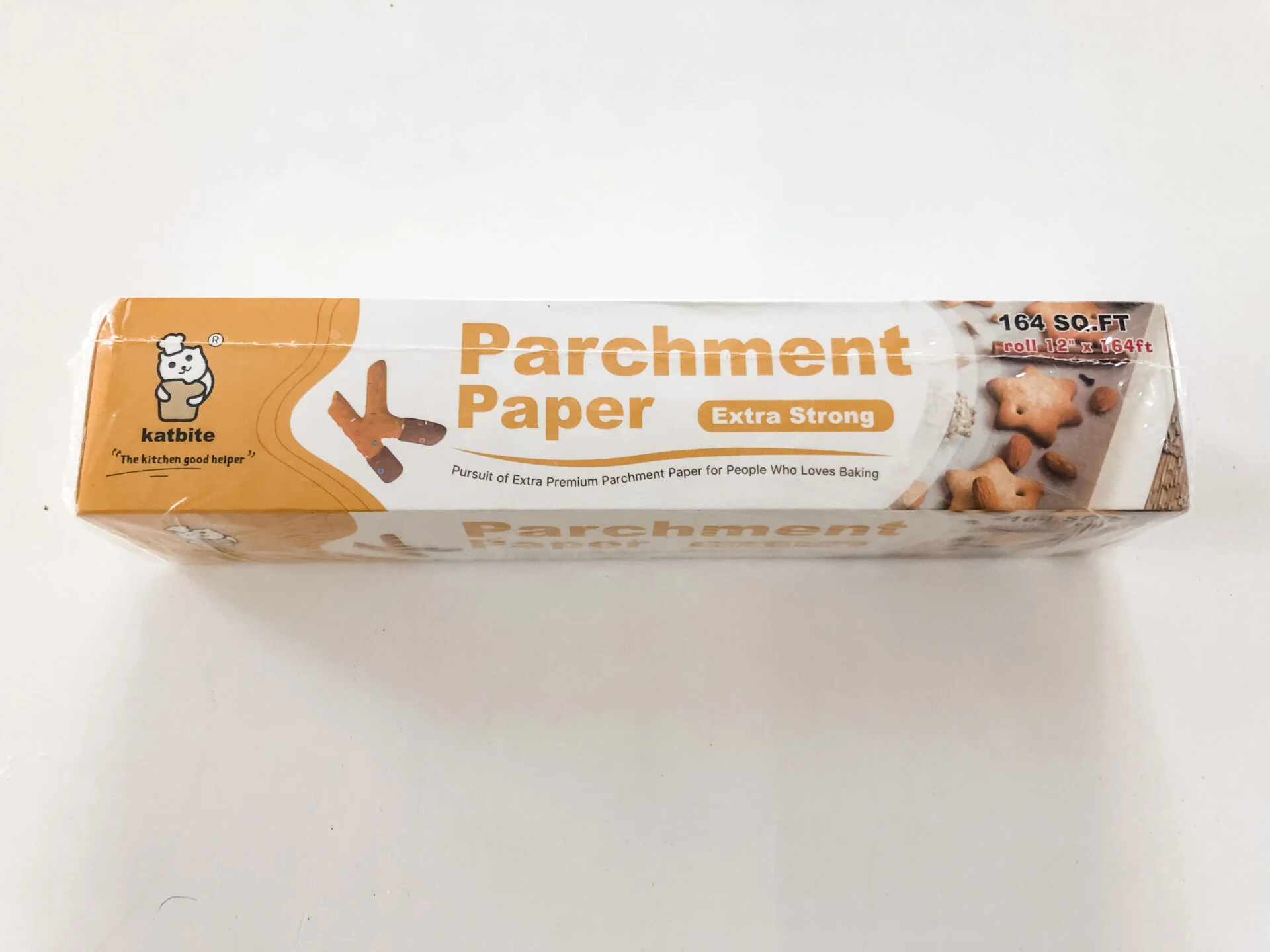When you’re cooking and using parchment paper, you certainly don’t want to use products that contain PFAS “forever chemicals” right? Mamavation tested 8 popular brands to help you out! You’ve trusted Mamavation to bring you topics like the safest baking sheets, cookie sheets, & sheet pans, safest food processors, safest cupcake liners, & safest kitchen stank mixers, now join us as we bring you the lab reports of 8 popular parchment paper brands so you can avoid PFAS “forever chemicals” in your kitchen. Which brands are likely contaminated with PFAS? Scroll down for the answers to those questions.
Disclosure: This post was medically reviewed by Sondra Strand, RN, BSN, PHN. Donations were provided by Environmental Health News and Mamavation community members. Mamavation has only “spot-checked” the industry and thus we cannot make predictions about brands and products that we have not tested. Products and manufacturing aides can change without notice so buyer beware. This post contains affiliate links, with some to Amazon, which means Mamavation will receive a portion of those sales and we will use that to pay ourselves back for the testing. You can also give a tax-deductible donation to our consumer studies here through Environmental Health Sciences. Click “yes” when asked if the gift is in honor of someone and type “Mamavation.” Thank you!

Potential Health Effects of PFAS Chemicals from Research Over Decades
PFAS (aka PFCs or perfluorinated chemicals, including PFOA and PFOS) are added to many products we purchase to make them “stain-resistant,” “grease-proof,” and “water-resistant.” In food packaging, they are used in popcorn bags, pizza boxes, fast food canisters & wrappers, and the flat dish on the bottom of cakes. They are also in carpeting, furniture, & clothing as “stain-proof” agents and you’ll find them on non-stick pans, some tooth flosses, and cosmetics.
Here is the list of health problems (PFAS) perfluorinated chemicals are linked with.
Because these chemicals are ubiquitous and persistent, meaning they do not go away, it’s important to limit your consumption of them as often as you can.
15,000+ PFAS “Forever Chemicals” Are Impossible to Test For Directly
This part about the testing is very important to understand. Because there are over 15,000 of these PFAS “forever chemicals” and testing is only available for about a couple dozen or so, it’s impossible to test for them all directly. Any critique of this form of testing will rely on this fact. Chemical companies hide behind the fact that they can’t be tested directly as a way to deny their presence. But the fact that 98% of people in the United States have some of these chemicals (PFOS, PFOA, PFHxS, and PFNA) inside their bodies, in addition, coupled with the fact that close to 100% of samples of breastmilk show traces, it’s apparent how prevalent they really are. Therefore it’s not shocking to find them in parchment paper.
Not being able to test for all available PFAS chemicals directly was a real big problem for the composting industry when ascertaining whether food packaging was safe to be certified as “compostable” for the gardens of consumers. So they devised a plan to test instead for fluorine, which is the chemical all PFAS chemicals have in common. Testing for fluorine and finding it at certain levels can indicate whether PFAS was “intentionally added” or not based on how much is found.
Mamavation did this type of testing the other day when we tested the top period underwear products for PFAS and found 65% of them contained fluorine, meaning the period underwear industry has a big PFAS problem as well.
Because testing for fluorine is the only standard that is out there for food packaging, we’ve adapted this to parchment baking paper for our investigation.

Additional Cookware & Other Kitchen Accessories
Mamavation has been making recommendations for non-toxic products for many years. Here’s a list of some of the additional investigations you’ll need for the kitchen.
Mamavation’s Investigation on Parchment Paper
Mamavation sent five popular brands of parchment paper to an EPA-certified laboratory, and they conducted tests of Total Fluorine by Oxygen Flask Combustion and Ion-Selective Electrode on all the parchment paper brands. The Level of Detection was 9 to 10 parts per million (ppm), meaning if the levels of fluorine were above that level, it would be detected. The parchment paper was purchased between April and July of 2021, and the contents were not opened and sent to the lab immediately. Late,r this post was updated in December of 2024 with three additional tests purchased earlier in 2024.
Here are the results we received from the lab:
As you can see, most of the parchment paper we found did not have detectable fluorine, but two of them did. “Non-detect” means that at the level of 9 or 10 ppm, the lab could not detect any fluorine.




